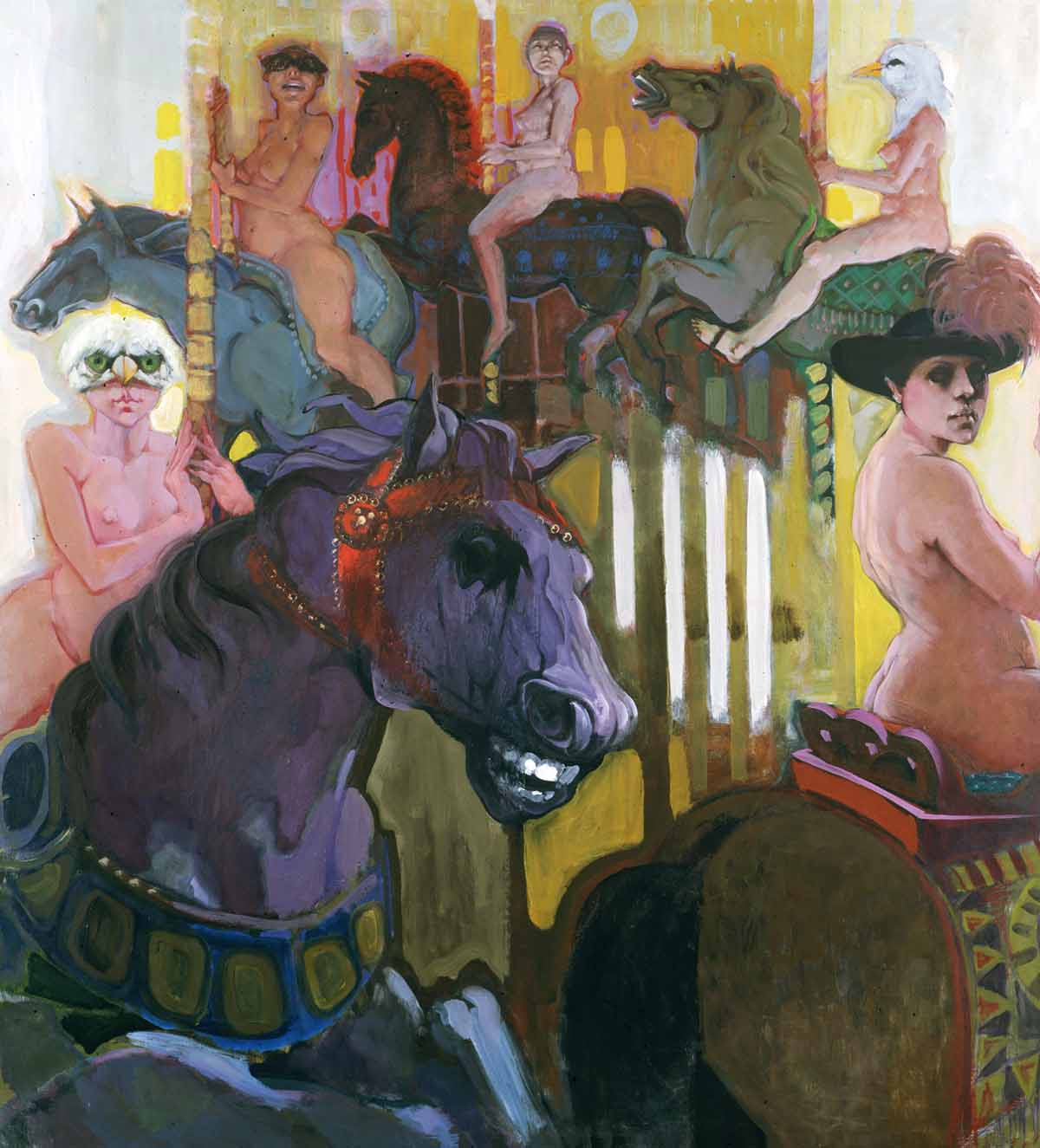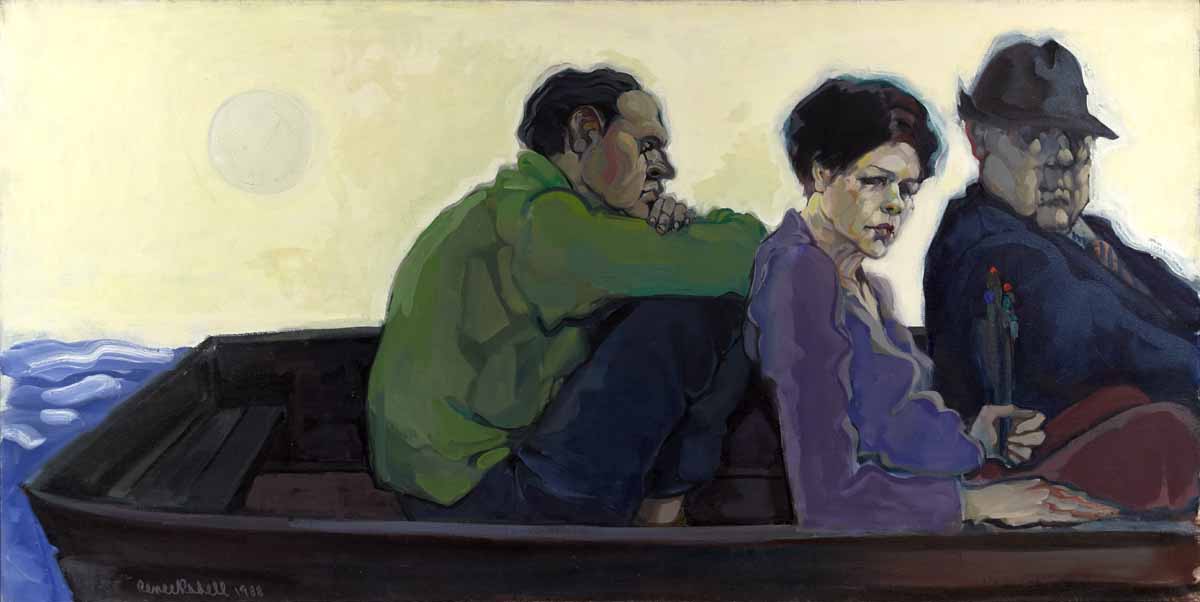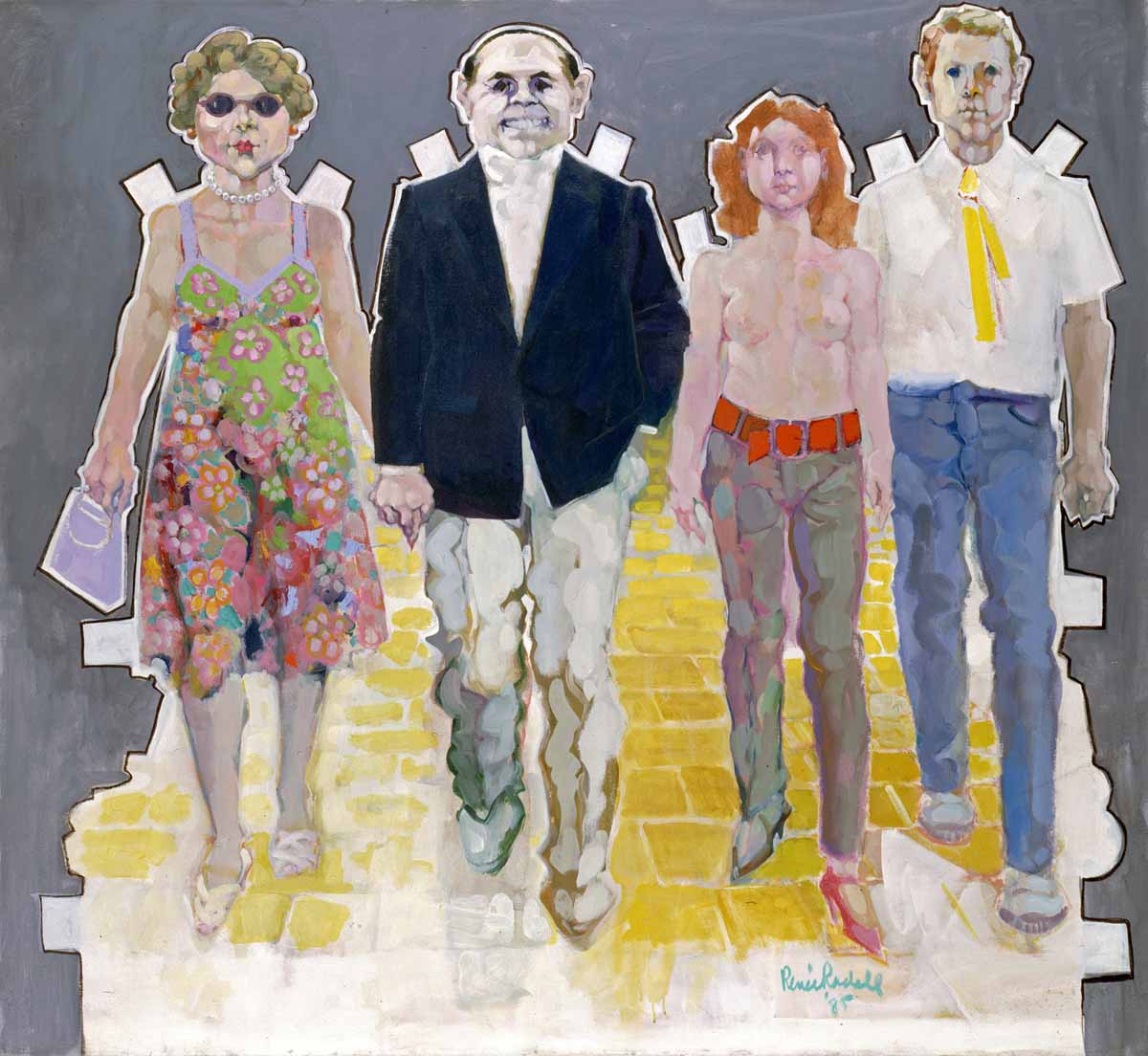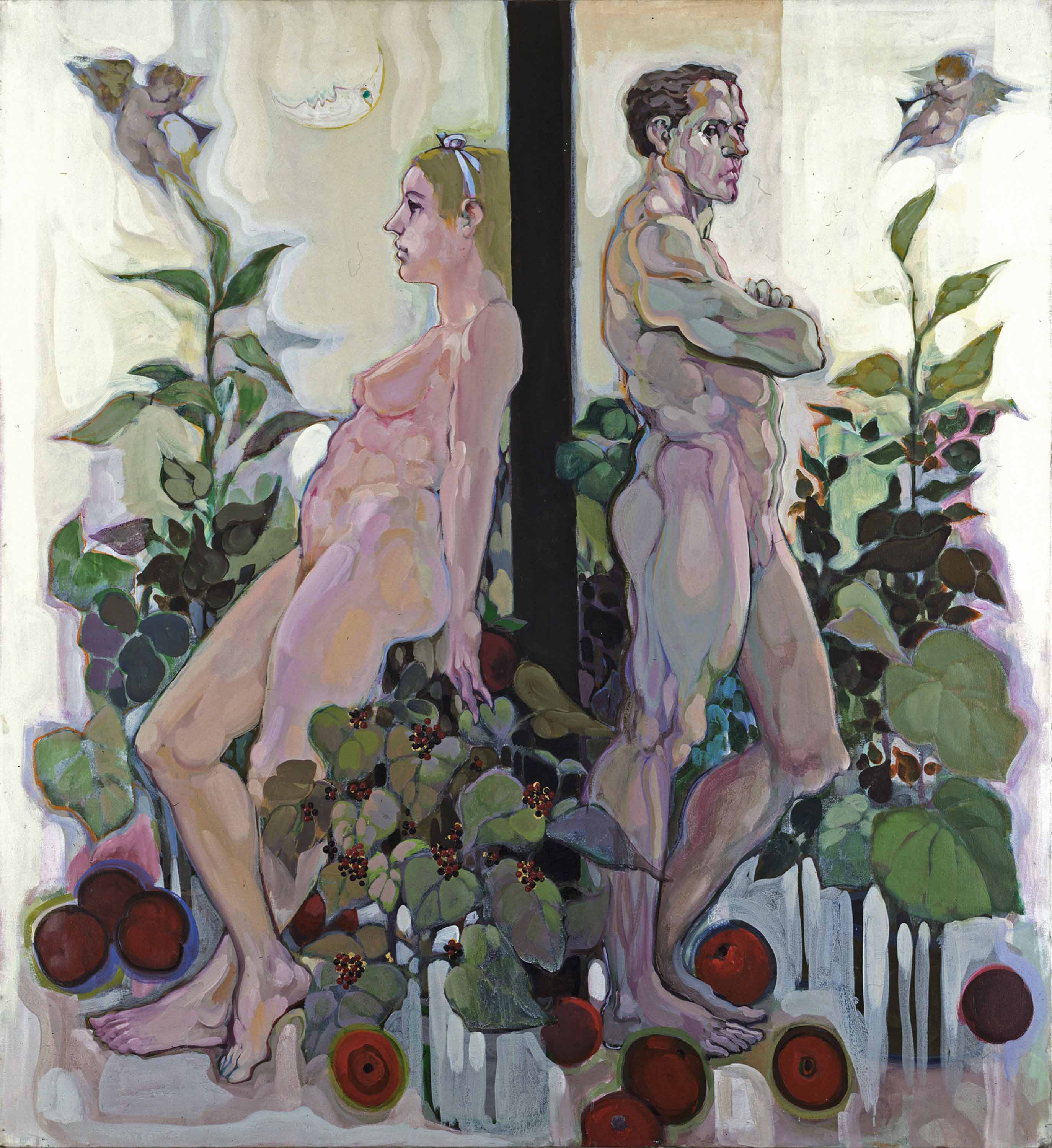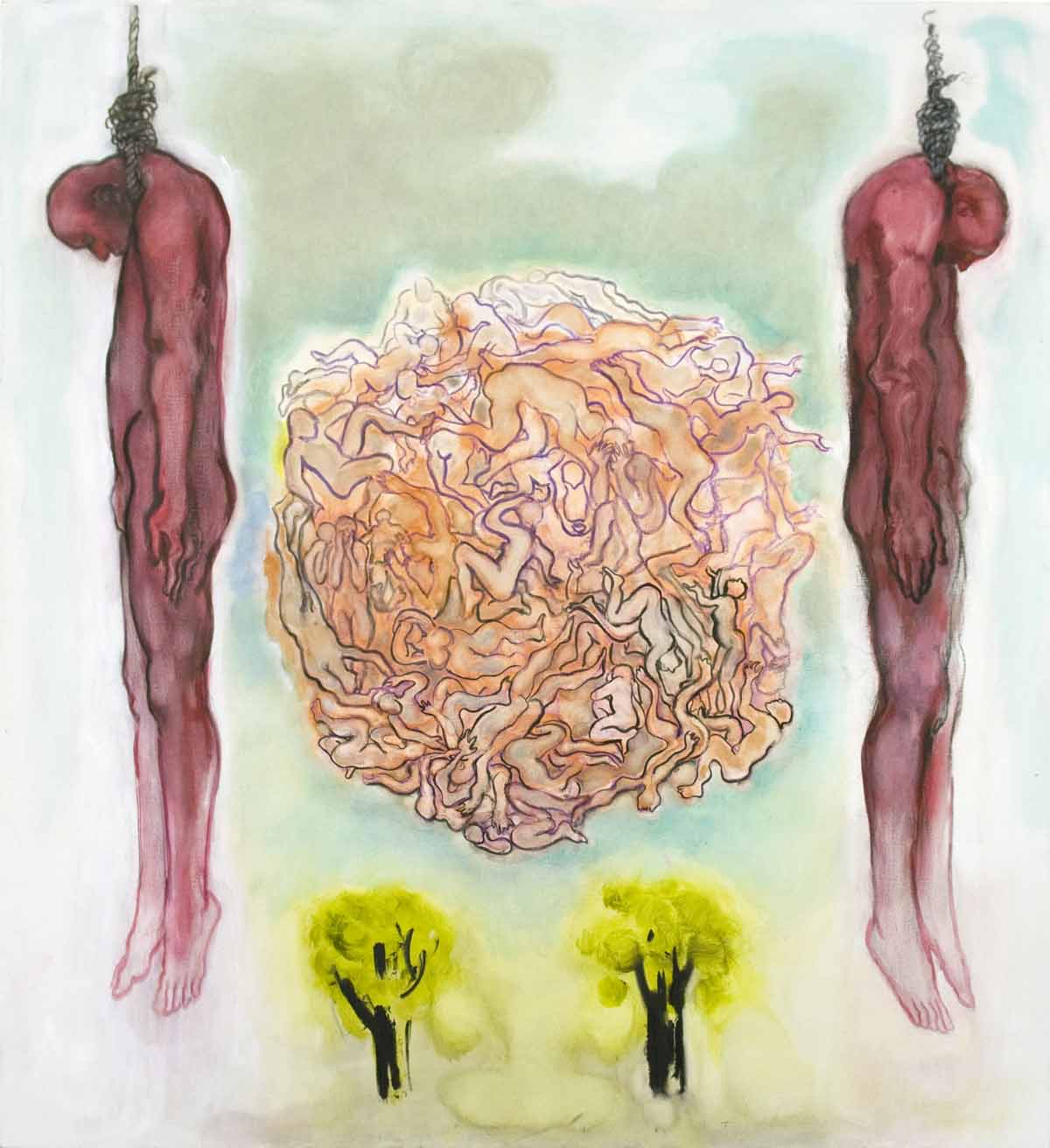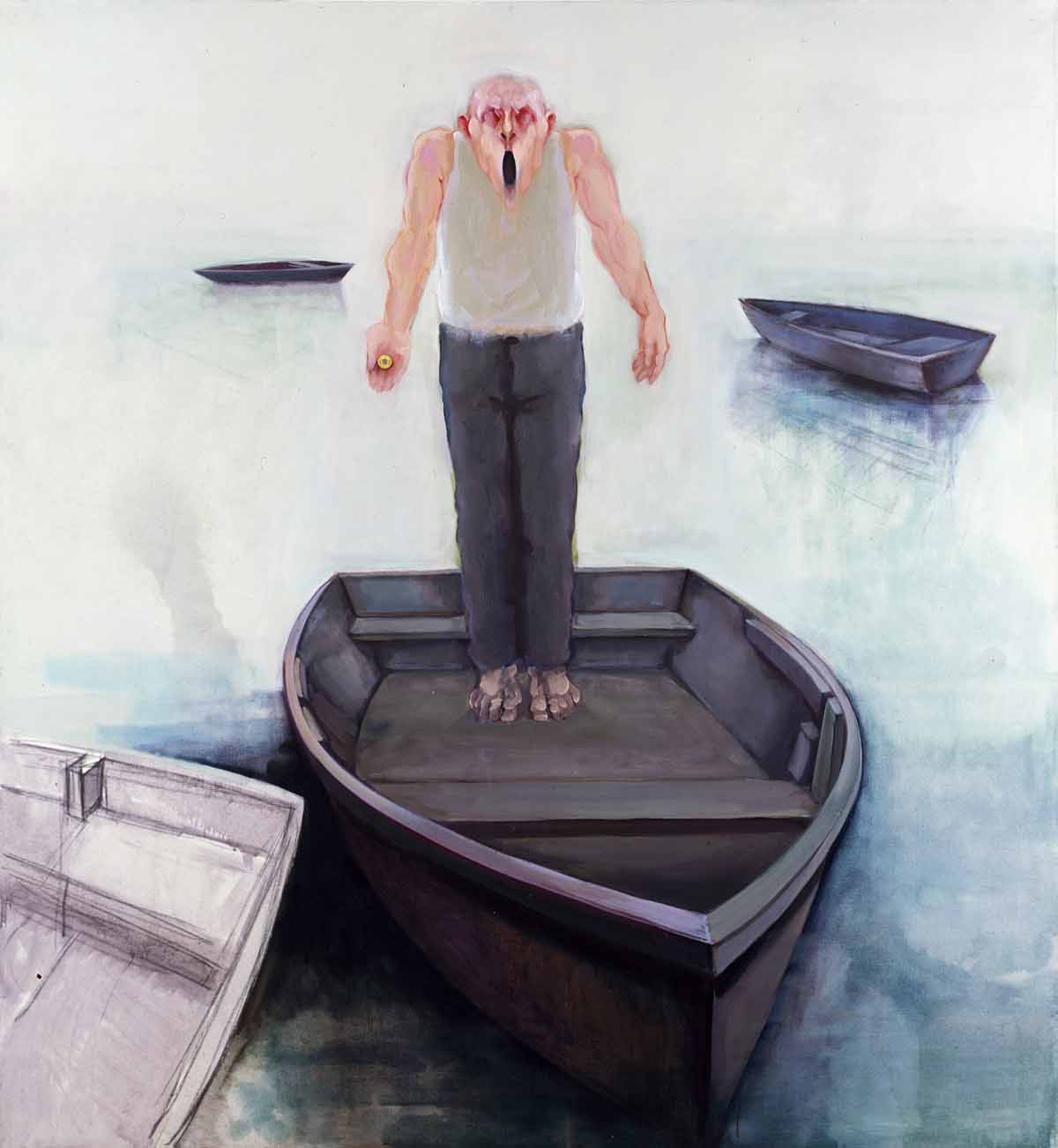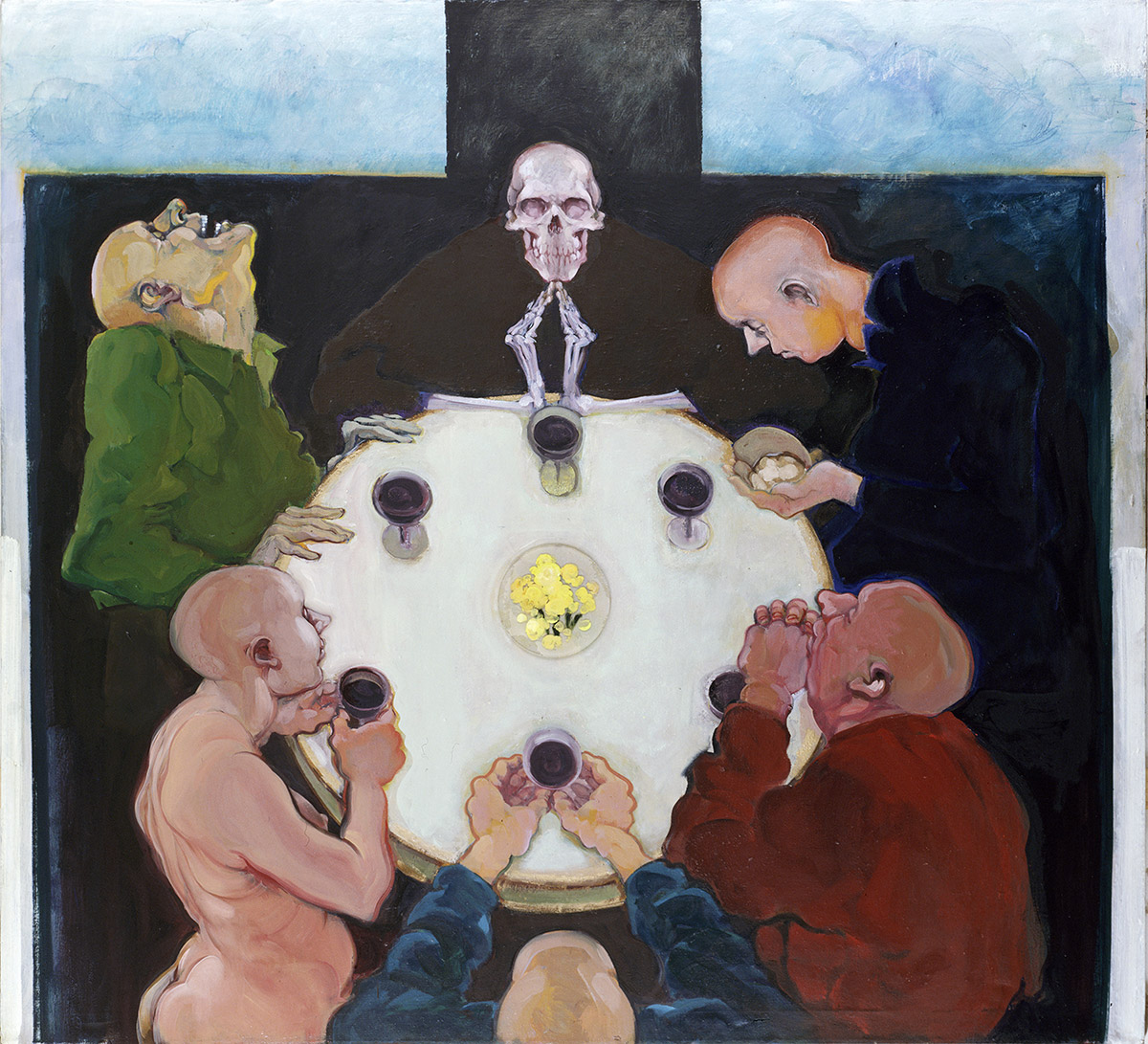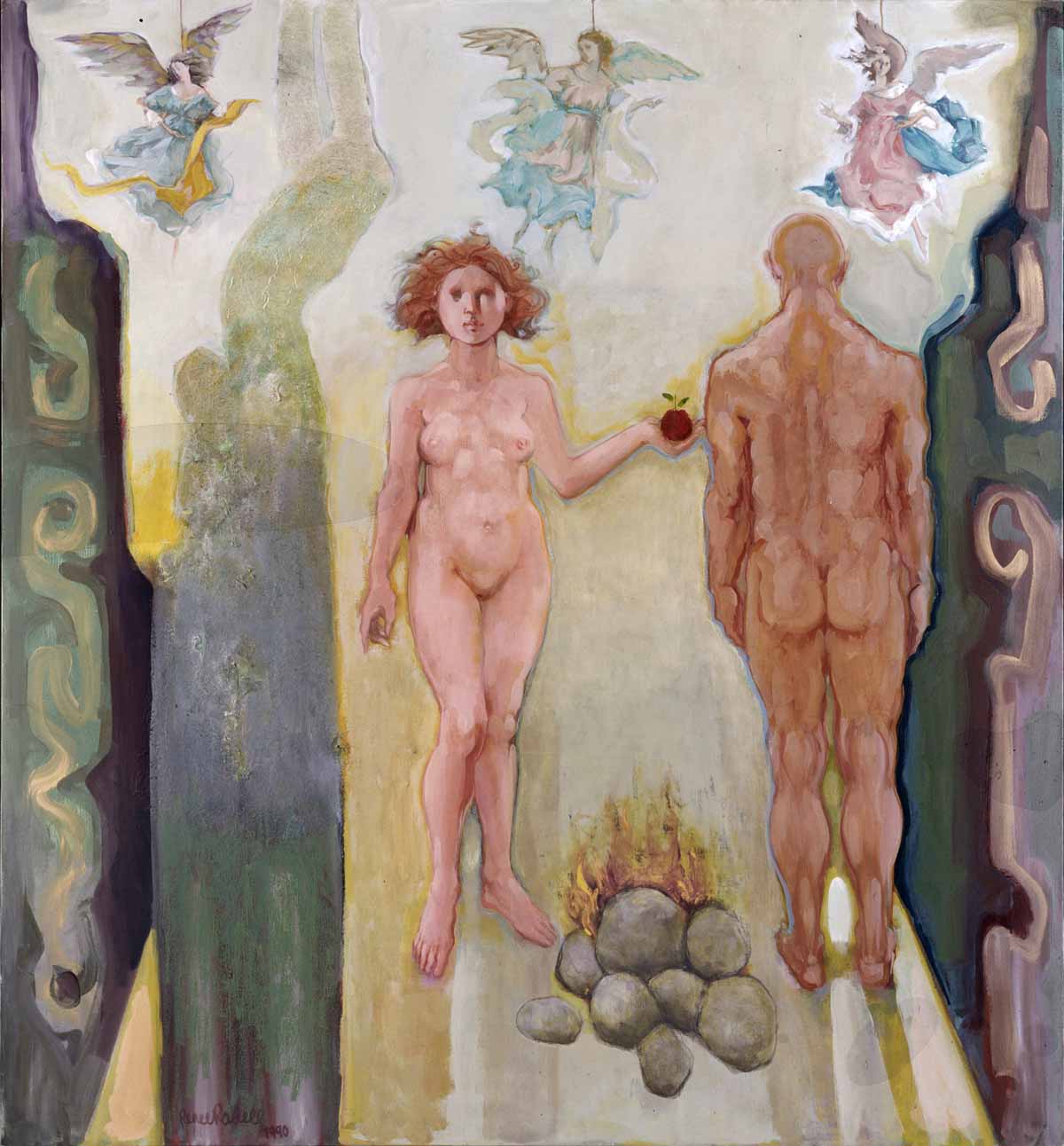OEUVRE
Symbolism
in the art of
Renee Radell
Renee Radell’s contemporary symbolism reflects elements of symbolist painters who have roots in late 19th century French poetry and literature. However, Radell uses her own preference for allegory with strong undertones of morality, with touches of surrealism, to flavor her unique version of symbolism in art.
Early use of symbolism
Renee Radell’s symbolism appears in her early social commentary paintings as the Vietnam War, caused anguished literal reflections about humanity which found resolution in spirituality. In a 1974 Detroit News Sunday News Magazine piece, Russell Kirk, man-of-letters and T.S. Eliot biographer, compared symbols in Radell’s paintings to the “permanent things” in Eliot’s verse, himself a master of symbolism. To quote Dr. Kirk:
If ever the poems of T. S. Eliot should he published in a splendid illustrated edition, Renee Radell ought to be the illustrator. For like Eliot, Mrs. Radell shows us the symbols of hell, purgatory, and paradise in 20th century forms.
Her armed vision discerns the boredom, and the horror, and the glory of this age. Her high talent with the brush transmutes a moment’s experience into a timeless image. She is a painter possessing moral imagination.
Her interest in pursuing ideas and topics intrinsic to art on a scholarly level became evident in research related to her own paintings and in her growing reputation as a professor and Artist in Residence at Mercy College of Detroit. In 1976, Radell’s lecture series “Imagery and Symbols in Art” was favorably received by attendees and the press on a panel at Hillsdale College in Michigan , which included author Tom Wolfe and poet John Ciardi.
Later use of allegory in Morality Plays
Strong elements of symbolism, allegory and surrealism became even more evident in Radell’s work after her move from Michigan to Greenwich Village, New York in the 1980s. She dubbed her allegorical work, “Morality Plays” at a 1990 solo art show in Soho, Manhattan, featured such powerful statements as Carousel, Rowboat of Fools, Yellow Brick Road and many others.
In her monograph Renee Radell Web of Circumstance (Predmore Press 2016), Eleanor Heartney delves deeply into the artist’s use of allegory, metaphor and symbolism.
Political works like [her early social commentary art] present Radell’s reactions to events in the news. But at the same time that she was responding to the external world, chronicling its absurdities, flagrant injustices, ironies and hypocrisies, she continued to draw as well on a rich inner reality. Since the very beginning of her career, she has used her art as a way to explore and come to terms with the big questions of life: Are our lives driven by fate or choice? How do we know what is good and how do we act on that knowledge? Is there hope that the injustices of the world will someday be righted? What does it really mean to be free? What waits for us on the other side of death?
These questions, and the kinds of answers Radell has formulated through her art are inflected with a deep moral sense that was nourished in her religious and educational upbringing and through parental guidance. While she is not strictly observant, she retains a finely tuned sense of good and evil, a powerful empathy for the weak and vulnerable and a belief that happiness comes through love. As an artist she states: “I do not intend to pass judgment. I only observe what I think I see, and hence to paint.
She expresses these sentiments in her art through allegory and metaphor. Her paintings are full of recurring symbols that have come to serve as a personal vocabulary in her search for understanding. Some originate in art history, some in religion and some are her own inventions. Among these symbols are birds, representatives of freedom, risk and the quest for truth. Apples have long been seen as symbols of choice in both biblical stories and classical mythology. Water suggests passage, stones represent stability, forests reference shelter, common vegetables represent Everyman. By finding visual metaphors like these for abstract ideas, Radell manages to enfold the visible world into the invisible one. In keeping with this practice, she has remarked that sometimes her paintings are dreams revisited.




